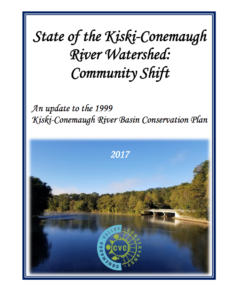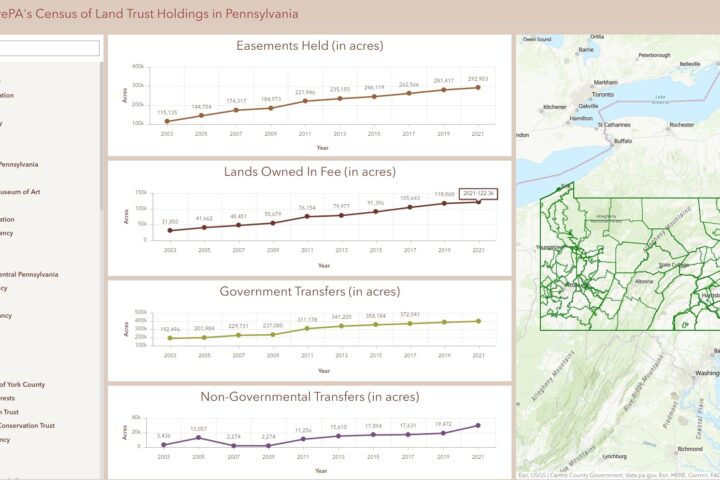The Conemaugh Valley Conservancy (CVC) recently released the State Of the Kiski-Conemaugh River Watershed, a report documenting the significant water quality improvements in the watershed. The 500-page report also provides a status report on each of the 120 recommendation made in the original 1999 Kiski-Conemaugh River Watershed Conservation Plan.
This is a truly remarkable story of how individuals, groups and local, regional, and state partners of all kinds have worked to restore their watershed and contributed significantly to their local economy in Armstrong, Cambria, Indiana, Somerset, and Westmoreland counties.

The Kiski-Conemaugh River Basin encompasses 1,888 square miles of southwestern Pennsylvania. It comprises 16% of the Allegheny River watershed, making it the largest sub-basin of the Allegheny River, which serves as a drinking water source for at least half a million people. Historically plagued by the results of the Industrial Revolution and the boom-bust economy that accompanied this time period, orange veins of polluted water coursed through the Kiski Basin’s heavily forested landscape for decades.
Beginning as early as the 1970s, watershed organizations and conservation groups mobilized and began addressing the problems within their boundaries. Many of these issues were documented in the original Kiski-Conemaugh River Basin Conservation Plan published in 1999. It was not a plan that collected dust on a shelf; it was heavily utilized, with about 88% of its 120 recommendations implemented to some degree.
In 2013, CVC’s Kiski-Conemaugh Stream Team secured funds to update this plan and document the recovery of our streams and rivers.
People recognized that the waterways were improving, but no one had quantified and publicized the collective results of restoration and conservation efforts since 1999. Over four years of data collection, tabulation, and evaluation created this document, which reveals that many of our streams and rivers have changed from being net acidic to net alkaline, from fish-poor to fish-rich.
But there is still plenty of work to do.
Many abandoned mine drainage (AMD) treatment systems are failing or undersized, erosion and sedimentation is replacing AMD as the number one source of water pollution, combined sewer overflows dump untreated waste into rivers on which people are increasingly recreating, new forms of natural resource extraction threaten the ecosystem, and funding sources are far less abundant.
On top of that, of the 12 watershed associations that operated in the Kiski Basin, two are defunct from a lack of interest and in seven others membership has dropped or flatlined since the group’s inception. Watershed associations struggle with securing volunteers to serve on their boards, replacing aging volunteers, and invigorating the group with new ideas and connections.
Click here for a copy of the executive summary of the report. Click here for the full report.



